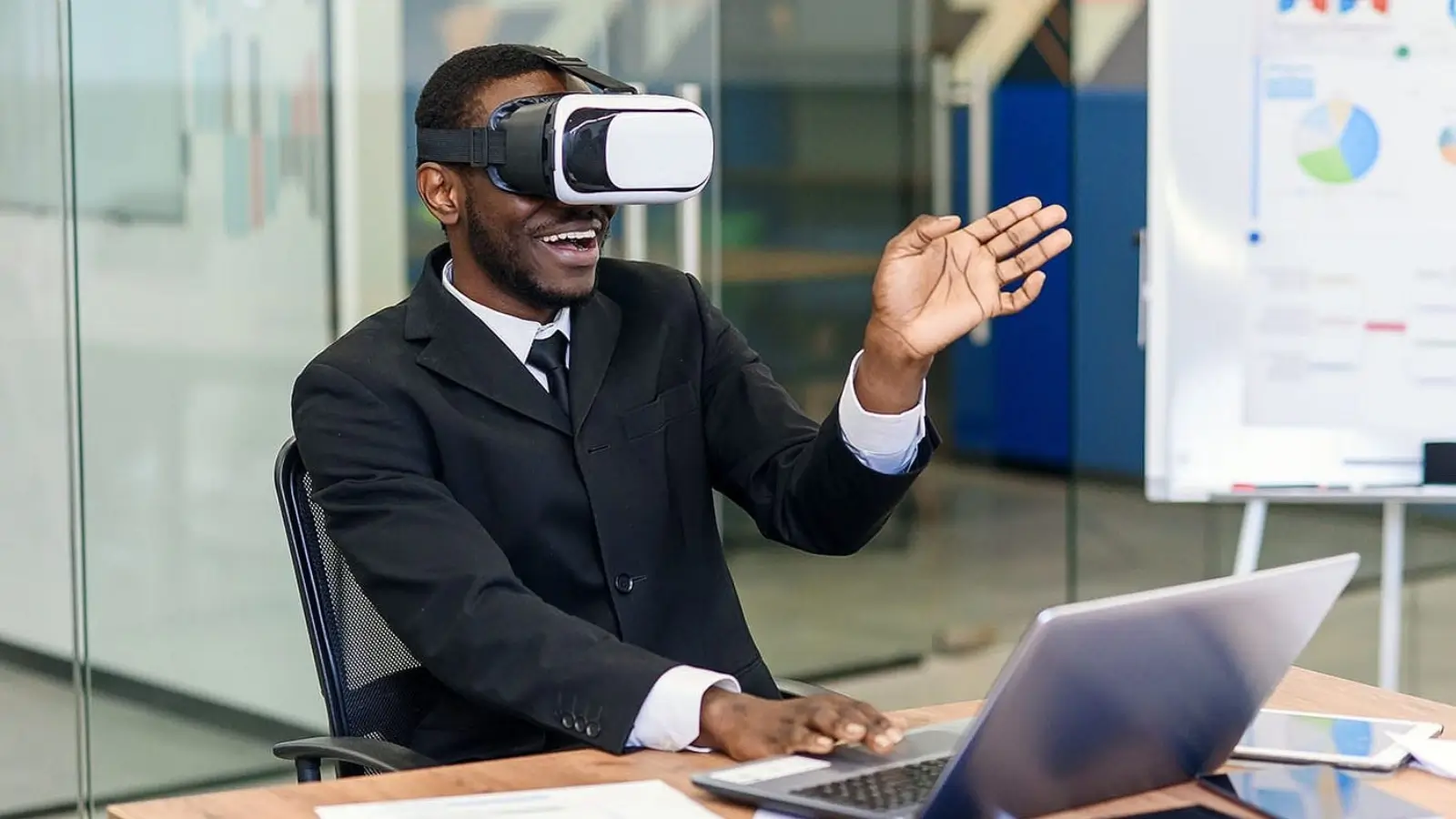


In today’s fast-paced business environment, soft skills are becoming increasingly important. From communication and leadership to problem-solving and teamwork, these non-technical skills are essential for fostering a productive, positive, and collaborative workplace.
Traditional training methods, such as workshops and seminars, have their limitations, often failing to engage employees or provide hands-on, realistic practice. Virtual reality is a cutting-edge technology that’s revolutionising the way soft skills are taught and refined in the workplace.
In this blog post, we’ll explore how vr soft skills training enhances employee development and boosts overall workplace performance.
Virtual Reality (VR) is no longer just for gaming or entertainment, it’s making a significant impact on various industries, including education, healthcare, and corporate training. By creating immersive, interactive experiences, VR allows employees to practice soft skills in real-life scenarios without the pressures of actual work environments.
For example, VR can simulate a difficult customer interaction, enabling employees to practice communication, conflict resolution, and emotional intelligence in a safe, controlled environment. This hands-on experience can be more effective than traditional methods, which often rely on theoretical learning and static role-playing exercises. The ability to simulate real-world situations allows employees to learn by doing, making it easier to retain and apply skills in their day-to-day roles.
One of the most compelling advantages of VR for soft skills training is its ability to engage learners on a deeper level. Traditional training methods, such as reading materials or lectures, often fail to capture the attention of employees, leading to a lack of focus and retention. VR, on the other hand, creates an immersive environment that actively engages employees in the learning process.
When employees can “live” a scenario—whether it’s negotiating a business deal, giving a presentation, or managing a team conflict—they’re more likely to absorb the skills and lessons involved. The immersive nature of VR encourages employees to experiment, make mistakes, and learn from them, which is an invaluable part of the learning process.
Studies show that people retain information better when they are actively involved in the learning process. The more senses that are engaged (sight, sound, and sometimes even touch), the more deeply the information is embedded in the learner’s memory. VR maximises this sensory engagement, helping employees retain soft skills for longer periods.
Soft skills, by nature, require a high level of personal interaction and emotional intelligence. For many employees, navigating difficult conversations or managing interpersonal conflicts can be intimidating, especially without prior experience. VR removes this barrier by allowing employees to practise these skills in a risk-free environment.
For example, VR can simulate a performance review between an employee and their manager, where the employee must deliver constructive feedback or handle a difficult conversation. Through repeated practice in VR, employees can build confidence in their ability to manage these situations, resulting in better outcomes when these real-world scenarios inevitably arise.
Since VR can simulate a variety of scenarios, employees can encounter different situations each time, further boosting their confidence and adaptability. This constant exposure to diverse scenarios prepares employees for the complexities of real-life interpersonal interactions.
Every employee has a unique learning style, and soft skills are no exception. While some may excel in group discussions, others may need more one-on-one practice to build confidence. VR can cater to individual learning preferences by offering customisable experiences that align with each learner’s needs.
For instance, if an employee struggles with public speaking, a VR module can simulate a range of audiences—small groups, large crowds, or even challenging environments like conferences or board meetings. The employee can then adjust their approach based on the type of scenario they are in, tailoring their presentation style, tone, and body language accordingly.
This level of personalisation ensures that employees can progress at their own pace, improving their soft skills in a way that suits their individual learning styles. As a result, employees are more likely to engage with the training and achieve better outcomes.
Soft skills like collaboration, problem-solving, and conflict resolution are essential for effective teamwork. VR provides a unique opportunity to simulate team-based scenarios where employees can practise these skills together. In a virtual environment, teams can collaborate on projects, solve problems, and make decisions in real-time, all while receiving immediate feedback on their performance.
For example, a team-building exercise in VR could involve a simulated project where team members must communicate, share ideas, and make decisions collectively. This type of training can help employees improve their communication skills, develop better interpersonal relationships, and understand the dynamics of team collaboration.
Additionally, VR can simulate challenging team interactions, such as dealing with a difficult team member or resolving conflicts between colleagues. These types of scenarios allow employees to experience different perspectives and practice negotiation and mediation techniques in a safe environment.
While traditional soft skills training often requires hiring external facilitators, renting training spaces, and organising in-person sessions, VR offers a cost-effective alternative. Once the necessary VR infrastructure is in place, companies can use it repeatedly, without incurring additional costs for each training session.
Moreover, VR training can be scaled across an entire organisation, regardless of location. Remote teams and employees across multiple office locations can participate in the same training modules, ensuring consistent development and reducing the need for in-person sessions. This scalability makes VR an ideal solution for global companies or organisations with large workforces, as it allows for uniform training delivery and reduces logistical challenges.
An often-overlooked aspect of training is the ability to track and measure progress. With VR, this becomes much easier. Many VR platforms offer built-in analytics tools that track a learner’s performance during simulations. These tools can measure factors such as how effectively an employee communicates, their decision-making speed, and their ability to solve problems under pressure.
This data allows managers and HR teams to monitor employee progress, identify areas for improvement, and adjust training programmes as needed. It also provides tangible metrics to demonstrate the effectiveness of soft skills training, helping organisations assess ROI and make data-driven decisions about future training investments.
Virtual Reality is revolutionising the way companies approach soft skills training, providing an immersive, engaging, and effective way for employees to develop and refine essential non-technical skills. From boosting confidence and improving retention to enhancing teamwork and collaboration, VR is transforming workplace training into an interactive, personalised experience.